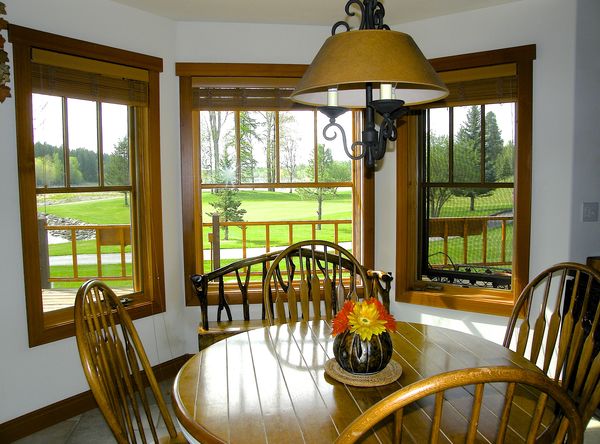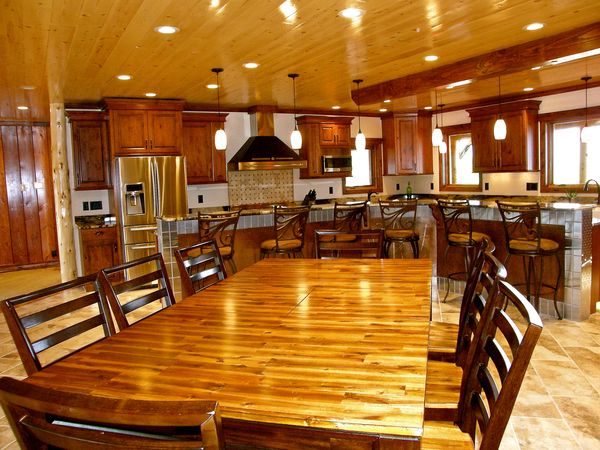Backlighting
Oct 8, 2014 21:32:08 #
Expose for the windows (or slightly underexpose them for richer color) and add flash to bring the interior to the desired exposure.
Oct 9, 2014 00:55:12 #
plimsoll wrote:
Expose for the windows (or slightly underexpose them for richer color) and add flash to bring the interior to the desired exposure.
And how do you deal with the different color temperatures of the window light and the interior light? And the issue of light spilling around the window opening?
Oct 9, 2014 01:12:32 #
snydersnapshots
Loc: Houston, Texas
MontanaTrace wrote:
I have been in Whitefish for seventeen years. Love it.
I love Whitefish. Mom and Dad moved there in 1985--after paying out of state tuition for 4 years in Bozeman--and moved to Great Falls in 2006. They lived on Karrow Avenue on ten acres they bought in the early 60's for about $5 grand.
My grandfather's family (Dad's dad) settled in the Flathead in 1893 and, though I grew up in the Seattle area, we spent a lot of time in the Flathead and up the North Fork when I was a kid. I'd love to see your pictures from the area.
Dad was very involved with the Whitefish Historical Society when he lived there. If, by chance, you were involved as well, let me know and I'll pass along his name.
Oct 9, 2014 10:08:58 #
Re: different color temperatures
I use flash to illuminate the interior, so it is the same color temperature as the exterior. If the interior ambient light is sufficently underexposed, then both interior and exterior are the same color temperature, since in this case, flash is the only light source for the interior.
If there is enough ambient incandescent light in the room, I would still keep the camera on a daylight or flash setting and let the interior go warm. If I want the interior ambient light (like a bright light bulb) to show but need to add some illumination with flash to supplement the interior incandescent light, then I use a cto gel on the flash to make is approximately as warm as the incandescent lights.
Basic idea is, I can control the exposure of the interior, but not the exterior (unless I gel the windows!). So I expose for the exterior light coming through the windows, and adjust the ambient interior light sources and my flash until I am happy with the results.
I use flash to illuminate the interior, so it is the same color temperature as the exterior. If the interior ambient light is sufficently underexposed, then both interior and exterior are the same color temperature, since in this case, flash is the only light source for the interior.
If there is enough ambient incandescent light in the room, I would still keep the camera on a daylight or flash setting and let the interior go warm. If I want the interior ambient light (like a bright light bulb) to show but need to add some illumination with flash to supplement the interior incandescent light, then I use a cto gel on the flash to make is approximately as warm as the incandescent lights.
Basic idea is, I can control the exposure of the interior, but not the exterior (unless I gel the windows!). So I expose for the exterior light coming through the windows, and adjust the ambient interior light sources and my flash until I am happy with the results.
Oct 9, 2014 11:33:13 #
plimsoll wrote:
Re: different color temperatures br br I use flas... (show quote)
plimsoll,
One more additional tip. If we cannot expose for the interior with flash filters, and/or control the ambient light streaming through an open window, we can expose for the interior, under expose for the window, and later apply PP to the window light. In normal conditions and near sea level altitude the reflected light from outdoor objects will be close enough to the white balance of the strobe flash. In high altitude, and overcast days the outdoor light may turn blueish; this is where selection of the window and application of levels and color balance come in handy with PP.
Michael G
Oct 9, 2014 17:13:47 #
plimsoll wrote:
Re: different color temperatures br br I use flas... (show quote)
Actually its more complicated than that - color temperature of window light will vary greatly - with time of day and exposure. The light bleeding into the room will have a cast, and if you don't want it to look contrived, then you need to color balance all of the light coming through the window. Unless you use 2400ws or 4800ws studio strobes you are not going to completely eliminate ambient light if it is strong.
In those situations you use a black velvet wrapped window insert to block out all the light. I understand that this is probably beyond the budget and level of expertise of the OP, but nothing compares to a properly illuminated interior. I used to do architectural photography with 4x5 view cameras back in the 70s - it was my approach to the lighting that set my work apart from the rest.
Oct 11, 2014 14:21:38 #
Armadillo wrote:
Trace, br Before you go into expending a lot of ha... (show quote)
Thank you for such a comprehensive answer. I learned a lot. I am currently considering the Canon SX60, so I can benefit from the final HDR product. Much to learn. It is important for me to illustrate the views from some rooms. There is my challenge. The Backlight control on my Olympus does pretty good. I want to make it even better. You have helped considerably. Thank you.
This is with my Olympus. It came out pretty good because the objects in the foreground are close to the window. When I have more room in fron of the windows (I'm further back in the room), the quality is much less. I'm starting to believe the Canon SX60 HDR feature will be what I'm after.

I shot this kitchen yesterday. I am pleased with the kitchen but look at the flood of light coming through the windows. Will the Canon SX60 HDR do what I want it to? A strong kitchen with good views?

Oct 11, 2014 14:31:38 #
snydersnapshots wrote:
I love Whitefish. Mom and Dad moved there in 1985... (show quote)
I know the current head of the Historical Society. Jill Evens. No one else or any history. I drive on or near Karrow several times a week. My real estate office is about a mile away.
Oct 11, 2014 14:34:31 #
plimsoll wrote:
Re: different color temperatures br br I use flas... (show quote)
I shoot the room with a flash. It works well with daylight coming through the windows. I shoot with the room lights on and off, choosing the better in PP. The incandescent does warm the room a little more than I like but the fixture looks odd when turned off.
Oct 11, 2014 14:35:52 #
Gene51 wrote:
Actually its more complicated than that - color te... (show quote)
It's of value to buyers to see the views from the rooms. The room is important and so is the view.
Oct 11, 2014 16:37:16 #
MontanaTrace wrote:
Thank you for such a comprehensive answer. I learned a lot. I am currently considering the Canon SX60, so I can benefit from the final HDR product. Much to learn. It is important for me to illustrate the views from some rooms. There is my challenge. The Backlight control on my Olympus does pretty good. I want to make it even better. You have helped considerably. Thank you.
MontanaTrace,
The dining room with alcove is very nicely lit with flash, but the outdoor scenery through the windows is over exposed. If you could have used Program mode with the flash you could have set the Exposure Compensation to -2Ev on the windows, locked the exposure, and allowed the flash to meter through the lens.
True HDR would also have helped in this situation, provided your EC had values of +/- 2Ev. True HDR requires a minimum of three exposures and to be processed in computer software. In camera HDR is not the same, you do not have enough control over the final product.
HDR might have helped the larger dining room because of its length. Using external flash might not have covered the entire length.
The flood of window light would have been decreased by a HDR exposure bracket of -2 stops exposure.
Michael G
If you want to reply, then register here. Registration is free and your account is created instantly, so you can post right away.


